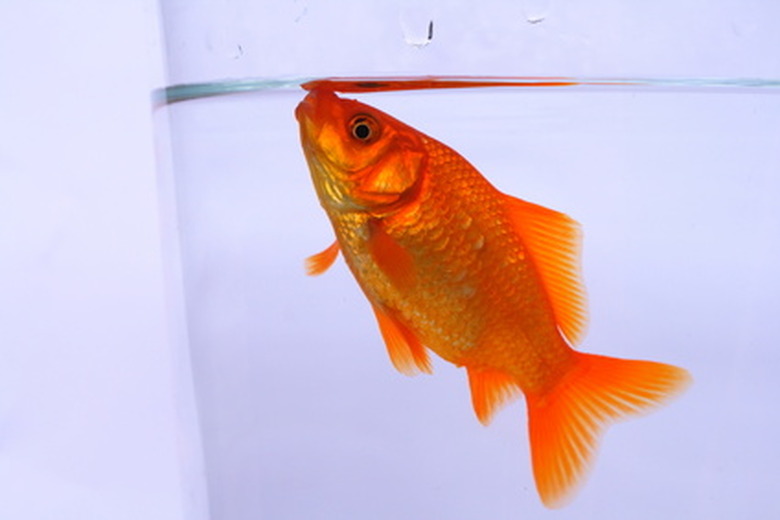Fish Behavior Science Fair Ideas
The natural world is full of wonder and mystery, making for entertaining and enlightening science projects. Experimenting on fish, in particular, can make for a winning science fair project that is also fun to perform. Whenever a budding scientist works with animals, the utmost care should be taken to prevent the creatures from experiencing undue harm.
Goldfish Memory
Goldfish Memory
An common myth is that goldfish have comically short memory spans. Put this myth to the test by purchasing several goldfish and placing them all in the same tank. Use non-toxic, waterproof paint to color one thimble red and another thimble blue. Each day, put the fish's food in the red thimble and slowly lower both thimbles into the fish tank with fishing line. If the goldfish begin to dart toward the red thimble to obtain the food within, you could deal a death blow to this myth. Be sure to insert the thimbles into different parts of the tank each day to ensure that the fish are responding to color instead of thimble placement.
Effect of Water Temperature on Respiration
Effect of Water Temperature on Respiration
Perform this experiment to determine if water temperature affects fish respiration. Place several fish in a tank with the water at the prescribed temperature, which can be discerned from knowledgeable pet store employees or online resources. Over the course of one week, count twice daily how many times each fish breathes per minute (look for fluttering gills and closing mouths when the fish takes a breath). Use a stopwatch to guarantee an accurate count and carefully record your results in a journal or notebook. The following week, raise the water temperature five degrees with an aquarium heater. Record respiration rates and compare to your original results. Raise the temperature a few more degrees for even more results, but do not raise the temperature so high as to injure or kill the fish. Ask a knowledgeable pet store employee or search online resources to discover how hot is too hot for your particular species of fish.
Affect of Light on Behavior
Affect of Light on Behavior
Purchase several small fish tanks and insert ten fish of the same species into each. Outfit each tank with a different light, such as regular fluorescent bulbs, compact fluorescent bulbs, LED aquarium bulbs and black light bulbs. For several weeks, record and compare the behavior of the fish in a journal at least twice a day. Observe their reaction to movement near the tank, their proximal relationships to each other, how much they eat, how quickly they eat and their general amount of movement. Make sure that you keep all other variables constant, such as food amount and water temperature.
Affect of Sound on Behavior
Affect of Sound on Behavior
Purchase three small fish tanks and insert an equal number of fish into each. Place one tank in a quiet room, and for the next few weeks, ensure that the fish live in a silent environment (no talking or music). Place another tank in a room outfitted with a stereo that constantly plays music of different types. Place the final tank in another room and, as you feed them, talk to the fish. Observe and compare the fish behavior in a journal at least twice a day for several weeks to determine if sound affects fish behavior. Observe their reaction to movement near the tank, their proximal relationships to each other, how much they eat, how quickly they eat, and their general amount of movement.
Cite This Article
MLA
Kopf, Aaron. "Fish Behavior Science Fair Ideas" sciencing.com, https://www.sciencing.com/fish-behavior-science-fair-ideas-6391872/. 22 November 2019.
APA
Kopf, Aaron. (2019, November 22). Fish Behavior Science Fair Ideas. sciencing.com. Retrieved from https://www.sciencing.com/fish-behavior-science-fair-ideas-6391872/
Chicago
Kopf, Aaron. Fish Behavior Science Fair Ideas last modified August 30, 2022. https://www.sciencing.com/fish-behavior-science-fair-ideas-6391872/
